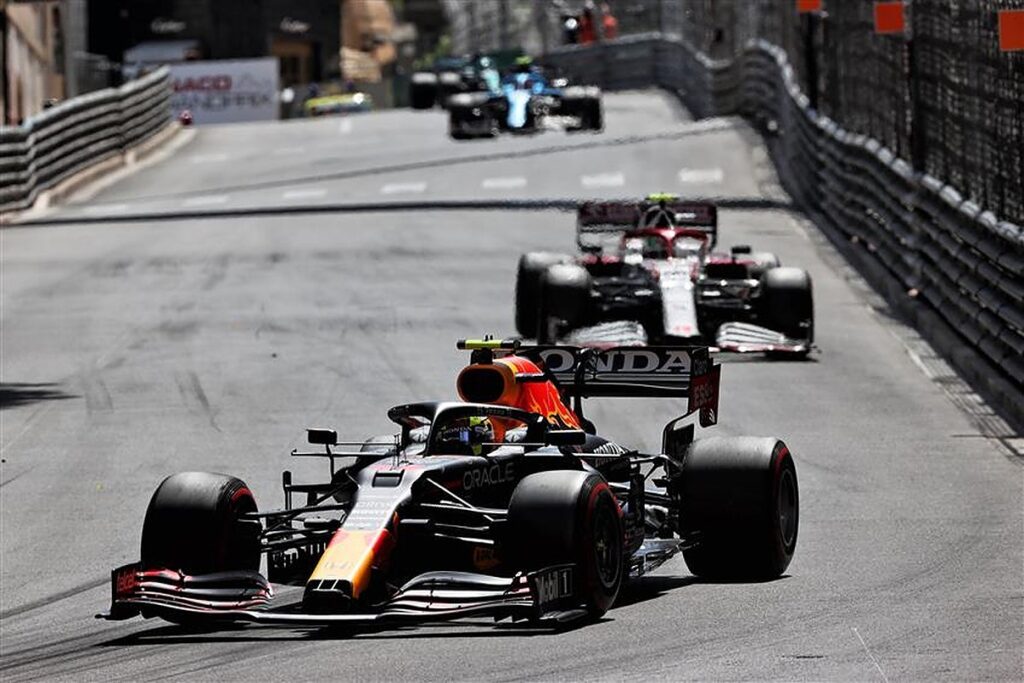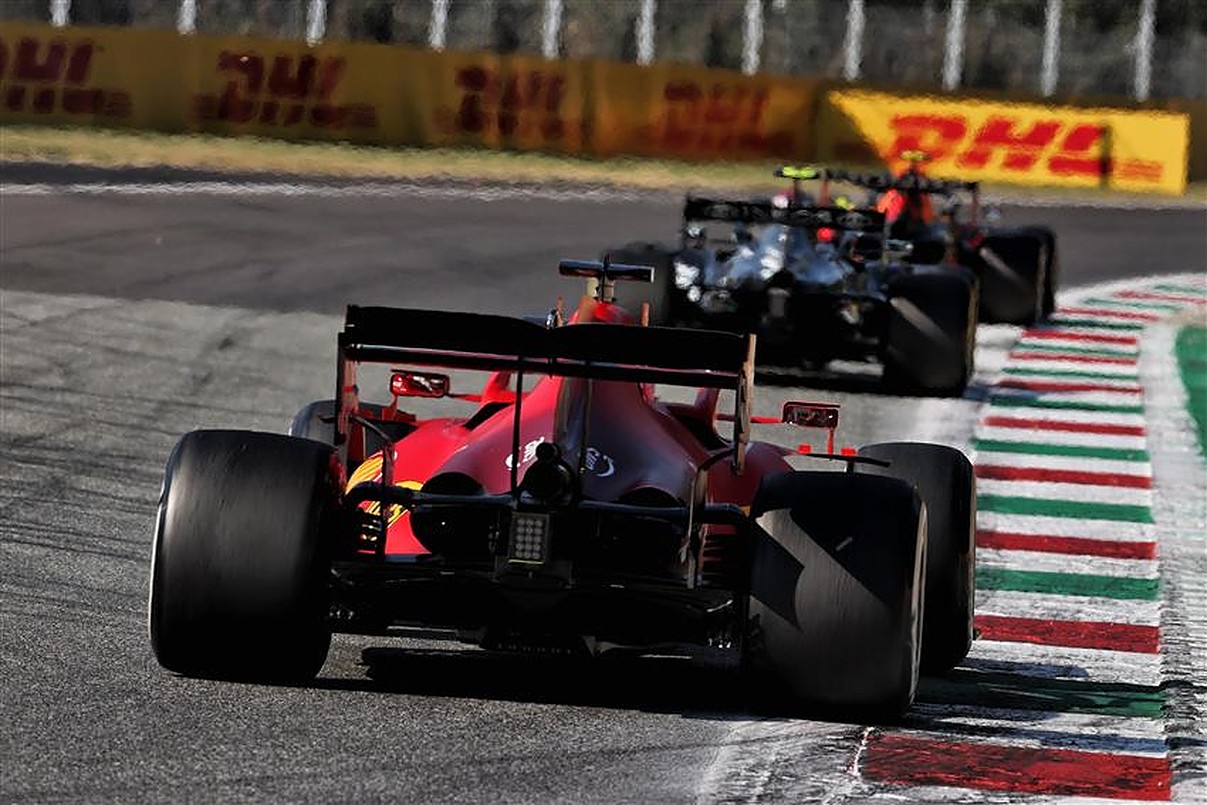Some of the best F1 tracks for overtaking are less obvious than others – in fact, one circuit which has consistently allowed for many overtakes is a street track.
Formula 1’s technical regulations have changed radically ahead of the 2022 season, and the aerodynamics of the cars have been reduced in a move that includes the return of ground effect.
Why has this been done? It is not a secret that for many years, fans, drivers and engineers have spoken about the difficulty of overtaking as a result of the dirty air effect that comes into play through the corners.
The fact that there are so many bits and pieces on the cars meant that air flow was heavily disrupted, and it leads to understeer and tyre wear as a result of the tyres overheating in traffic.
This is also the reason for the tyres increasing to 18 inches ahead of the 2022 season, as F1 tries in earnest to aid overtaking action and thus improve the show for the fans.
Are F1 cars entirely to blame?
While improving the cars to allow for better following can only be a good thing, questions do naturally have to be asked as to whether it is not just the machines, but also the tracks they are driven around that may be the issue.
There are a multitude of circuits on the current calendar that perhaps deprive drivers of any real overtaking opportunities, and detract from the fans’ enjoyment.
After all, there is nothing worse than heading to a circuit to see a race having bought a general admission ticket, discussed where to go in order to see the best overtaking action, only to find that there are no real distinct areas where this can take place.
With that said, let’s go over the best and the worst circuits in F1 for overtaking, and just what makes them so good – or bad.
The best F1 circuits for overtaking
Monza
Let’s start with the obvious. The temple of speed has been on the calendar under several iterations since 1950. In fact, it has held the world championship Italian Grand Prix every year since 1950 except for 1980, when it was held in Imola.
Having been criticised at the beginning of its life cycle for the sheer amount of deforestation that would have to take place in order to construct the 5.7 kilometre circuit, it was eventually introduced with its famous banking and sweeping corners.
Now, mainly due to safety and the tragic passing of Alberto Ascari, it has undergone a tremendous amount of change.
These changes have led to a heavy braking zone into Turn 1 at the end of the long home straight and, with the aid of DRS, it makes for a perfect opportunity to get moves done.
Further chances await into the Roggia and the Ascari chicanes and, if you get the necessary run, maybe even through the final corner at Curva Alboreto.
Spa-Francorchamps
The longest circuit on the calendar, Spa features a mammoth two-kilometre run from the first corner at La Source, flat out all the way to Le Combes at the top of the hill in a route that includes the famous Eau Rouge corner.
The Kemmel straight then provides the chance to fly by going into Les Combes, and plenty of side-by-side action can be seen in the right-left complex before one driver will eventually have to yield heading into the uncompromising right of Malmedy.
This is not the last chance though. Max Verstappen managed a stupendous overtake on Felipe Nasr round the outside at Blanchimont in 2015, and a late move into the Bus Stop chicane is never off the cards either.
Shanghai International Circuit.
While potentially a peculiar one, we do see lots of close racing at the Shanghai International Circuit.
The run into Turn One provides somewhat of a chance if you are close enough, and the run up through Turn five into six can also be used as a decent spot to send one down the inside – as Daniel Ricciardo can testify to following his late heroics in 2018.
The “snail section” at Turn 13 allows for a slingshot run onto the back straight, with the DRS helping the drivers close up down the extremely lengthy flat-out period.
Kimi Raikkonen was a victim of the multitude of passing chances in 2012, dropping from second all the way to 12th in the closing stages of the Chinese Grand Prix that year.
The worst F1 tracks for overtaking
Valencia
Only five Formula 1 grand prix took place at this circuit, but truth be told it is a wonder it went on for as long as it did.
The Valencia Street Circuit was introduced in 2008 as the European Grand Prix, and formed a second race in Spain alongside Barcelona.
The only heavy braking zones at the circuit arrived immediately before a chicane, meaning that if you did not have an overtake done down the straight before you got to the corner, you were unlikely to get the move done at all.
Even if you do, there is no stopping a Pastor Maldonado bulldozer move into the second part of the chicane, after the Venezuelan wiped Sir Lewis Hamilton out of the 2012 European Grand Prix.
In fairness, the race in 2012 was not all that bad, with an emotional Fernando Alonso taking one of his three wins that year.
But in 2009, there was just one in-race overtake throughout the entirety of the event, and the track – complete with its beautiful swing bridge – was abandoned by F1 ahead of the 2013 season.
All that can be seen there now are the remnants of races gone by, which is quite sad really.
Circuit de Catalunya
If it is a procession you’re going for, this is probably the race for you.
There are two DRS straights here, and neither of them lead to a big braking point, meaning that it is tough to go wheel-to-wheel into either Turn one or Turn 10.
Only three of the 32 races held at the track have been won from outside the front row of the grid, with 22 coming from pole position.
What likely does not help is the fact that the drivers have done so much testing at this track over the years, and are therefore well drilled on each and every corner, making passing one another a tough ask.
But more than that is the nature of the long, twisty corners that do little to promote close following. This, coupled with the clumsy-looking final chicane, gives drivers no shortage of challenges heading onto the DRS straights.
Monaco
Monaco slander tends to be one of the more polarising things a Formula 1 fan can do, with the frequent snapback pertaining mainly to the history of the Monaco Grand Prix.
There is no denying that Monaco is the beating heart of F1 racing having been on the calendar since the very beginning of the championship in 1950, and the glamourous star-studded parties are an easy pull factor if your are of such persuasion, but hardcore racing fans who want to see overtakes every lap will be left heavily disappointed.

The first corner of San de Vot, the Nouvelle chicane and Rascasse are really the only spots in which a dive down the inside is plausible, but even then it has to be timed just right to avoid a collision with your rival or indeed the barrier.
Further, they tend to be clumsy looking overtakes that leave question marks as to their legality, particularly through the chicane right after the infamous Monaco tunnel.
And Charles Leclerc’s puncture in 2019 tells you all you need to know about attempting an overtake into the penultimate corner – it is outstanding if you get it right, but humiliating if not.
Really, you come to Monaco for the racing, but you stay for the night life.
That concludes the list. We are not sure whether the new cars will make a significant difference to the overtaking spectacle that can be enjoyed by the fans, but we live in hope that sweeping corners, awkward chicanes and lairy corner exits will be negated by the new machines.

